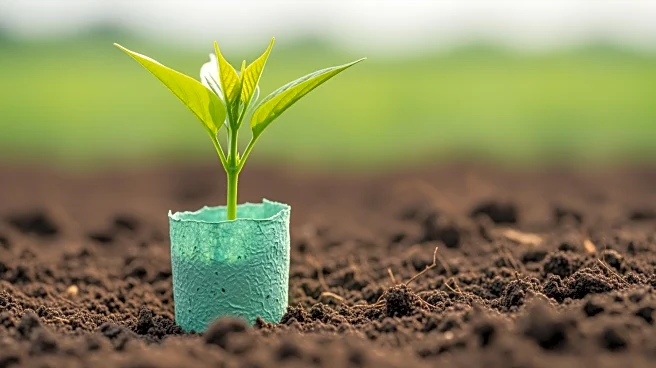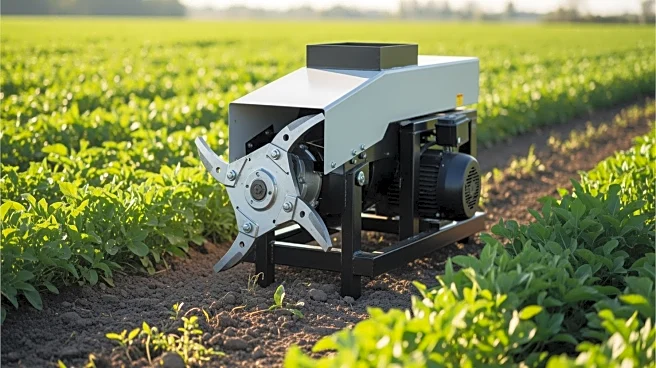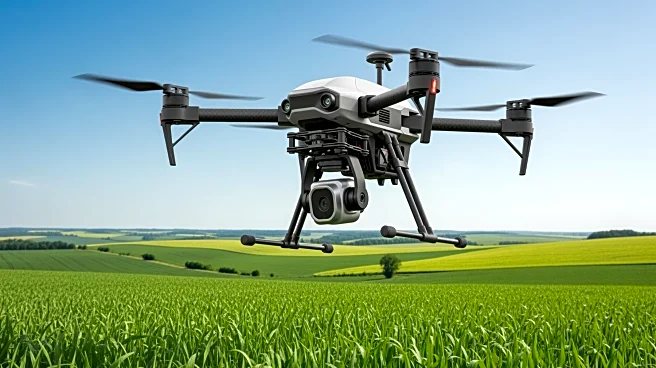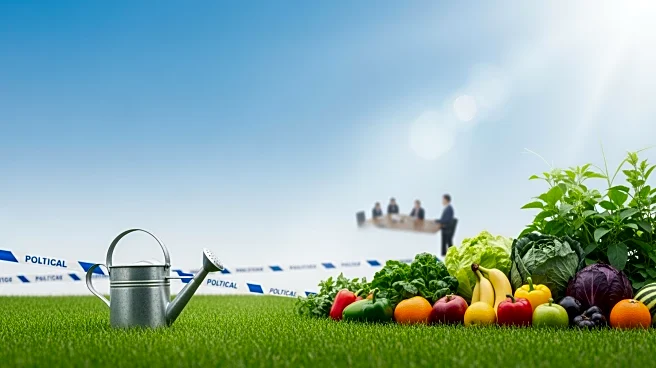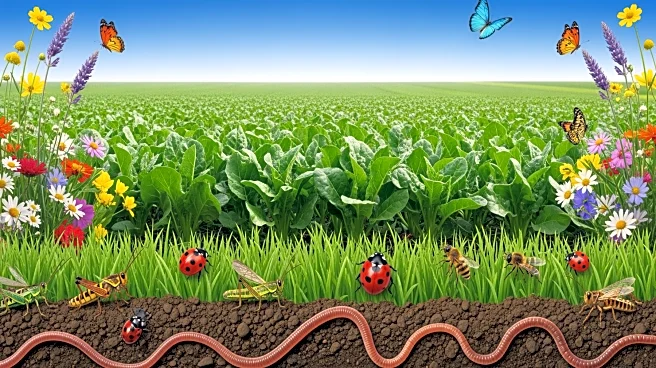What's Happening?
The biodegradable agricultural films market is poised for significant growth, with projections indicating an 80% expansion by 2035. Currently valued at USD 1,100.0 million in 2025, the market is expected
to reach USD 1,973.6 million by 2035, driven by a compound annual growth rate (CAGR) of 6.0%. This growth is largely attributed to the increasing adoption of sustainable agricultural practices and innovations in material technology. Governments worldwide are enforcing regulations that promote eco-friendly alternatives to traditional plastic films, further fueling market expansion. The PLA-based segment, which holds a 35% market share, is anticipated to lead this growth due to its mechanical strength and biodegradation capabilities. Mulching applications, commanding a 45% market share, are expected to continue dominating the market as farmers recognize the benefits of biodegradable solutions for yield and soil health.
Why It's Important?
The expansion of the biodegradable agricultural films market is significant for several reasons. It reflects a broader shift towards sustainable farming practices, which are increasingly necessary to meet environmental regulations and consumer demand for organic produce. The growth of this market is likely to benefit farmers by providing eco-friendly solutions that enhance soil health and crop yields. Additionally, technological advancements in biodegradable polymers are improving the performance and cost-efficiency of these films, making them more accessible to farmers. This trend is expected to reduce plastic waste in agriculture, contributing to environmental conservation efforts. The market's growth also indicates potential economic benefits, as increased demand for biodegradable films could stimulate job creation and innovation in the agricultural sector.
What's Next?
Looking ahead, the biodegradable agricultural films market is expected to continue its upward trajectory, driven by technological advancements and expanding applications in greenhouse farming. Between 2030 and 2035, the market is projected to gain further momentum, contributing significantly to the decade-long growth. Governments are likely to continue implementing stringent restrictions on non-biodegradable plastics, making eco-friendly films a compliance necessity. As consumer awareness of sustainable farming practices grows, demand for biodegradable films is expected to rise across various crop segments. Additionally, government incentives, such as subsidies and sustainability mandates, are likely to promote rapid adoption of biodegradable agricultural inputs, further supporting market growth.
Beyond the Headlines
The growth of the biodegradable agricultural films market has deeper implications for environmental sustainability and agricultural practices. As farmers increasingly adopt biodegradable solutions, there is potential for long-term improvements in soil health and reduced reliance on chemical inputs. This shift could lead to more resilient agricultural systems capable of withstanding climate change impacts. Furthermore, the market's expansion may drive innovation in biodegradable materials, leading to new applications and technologies that enhance agricultural productivity. The focus on sustainability also aligns with broader global efforts to reduce plastic waste and promote environmental conservation, highlighting the importance of eco-friendly solutions in achieving these goals.
